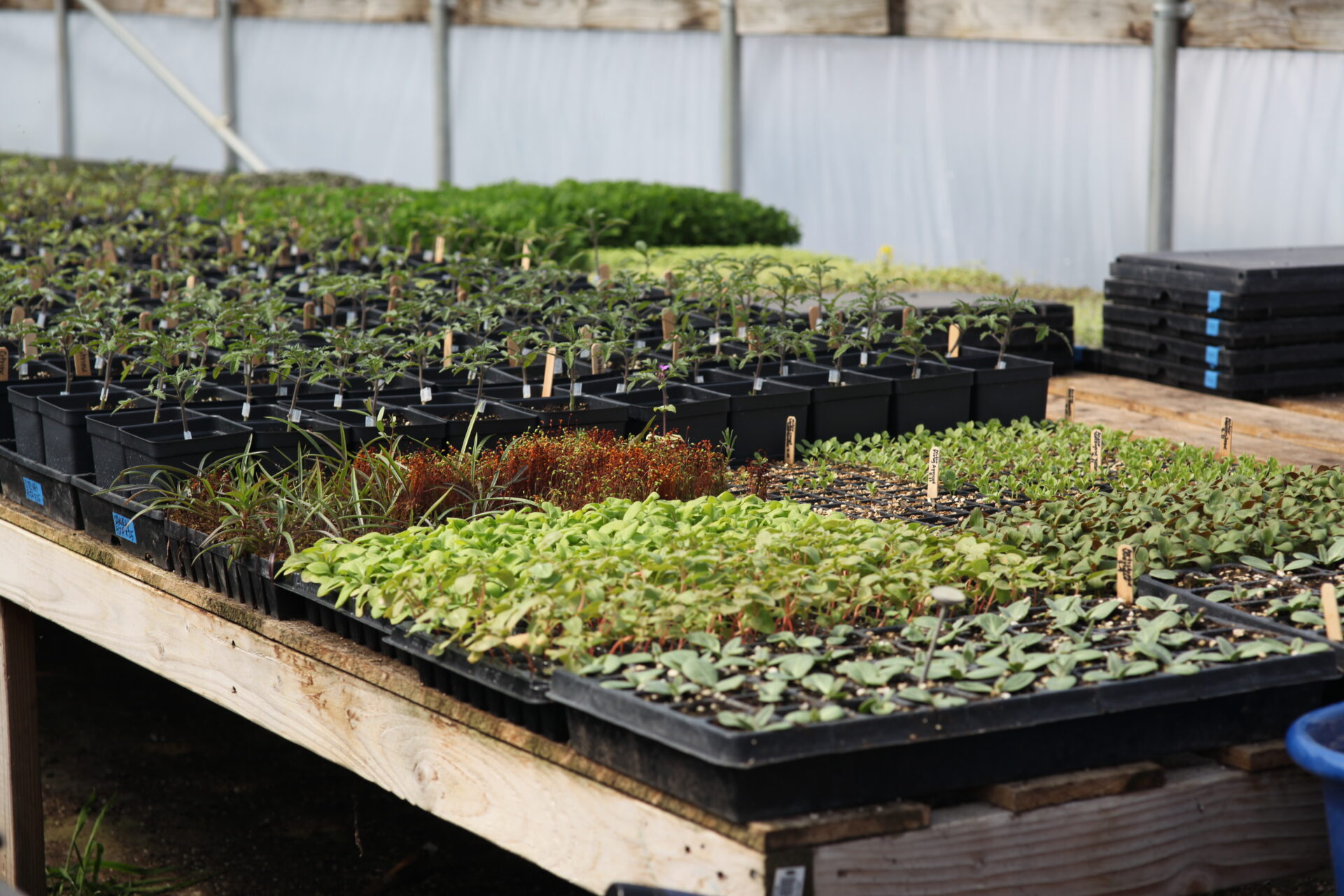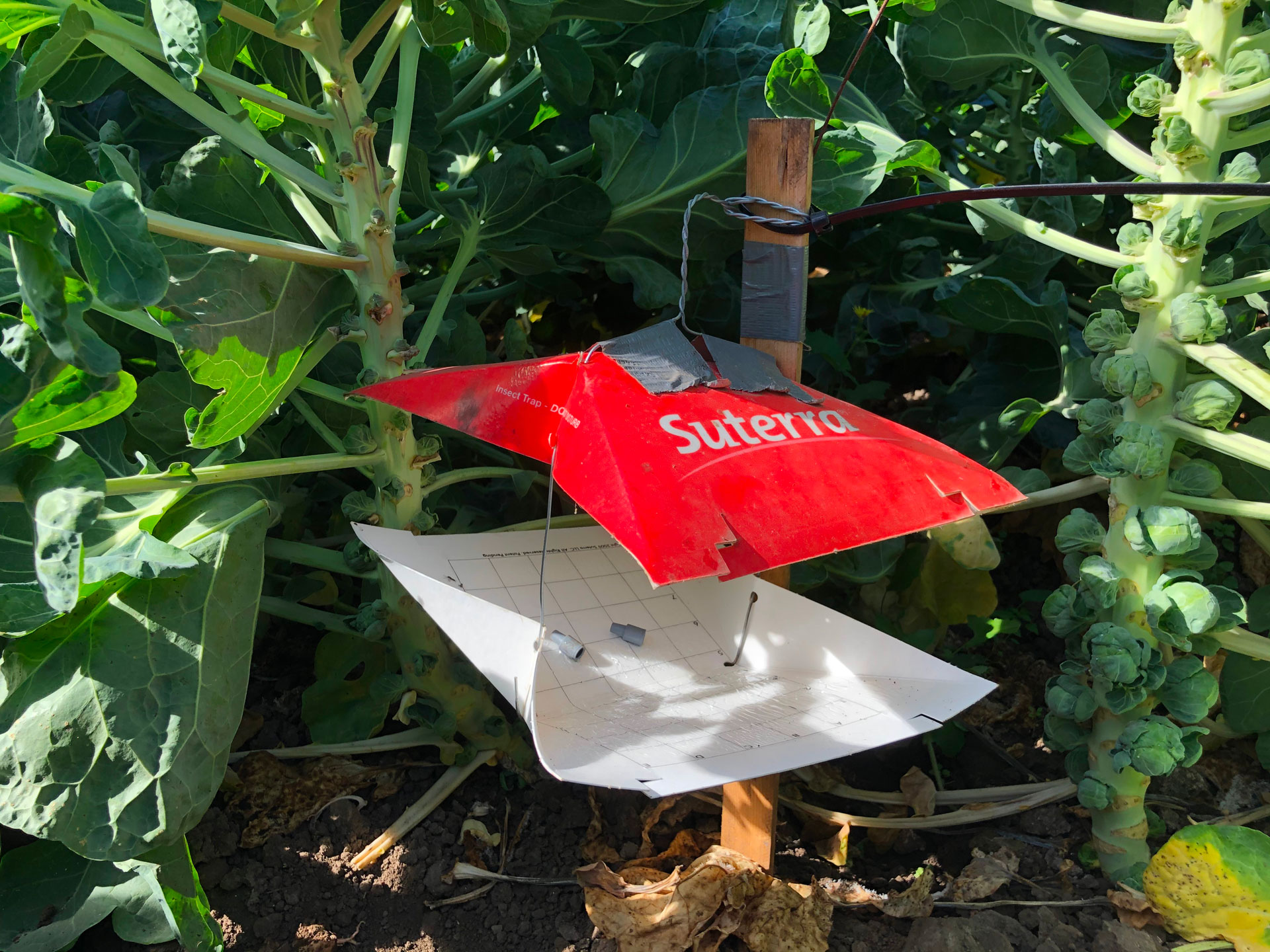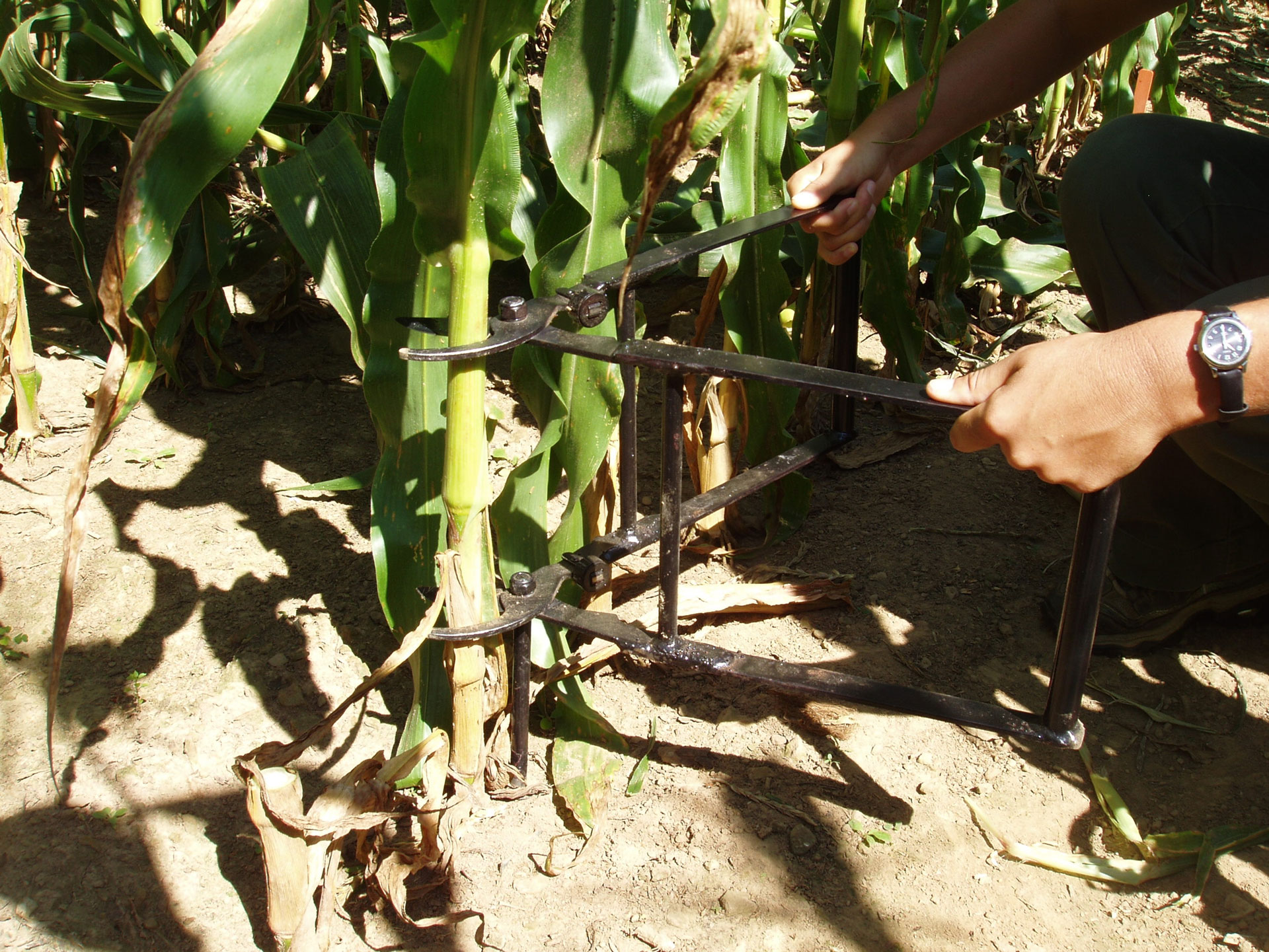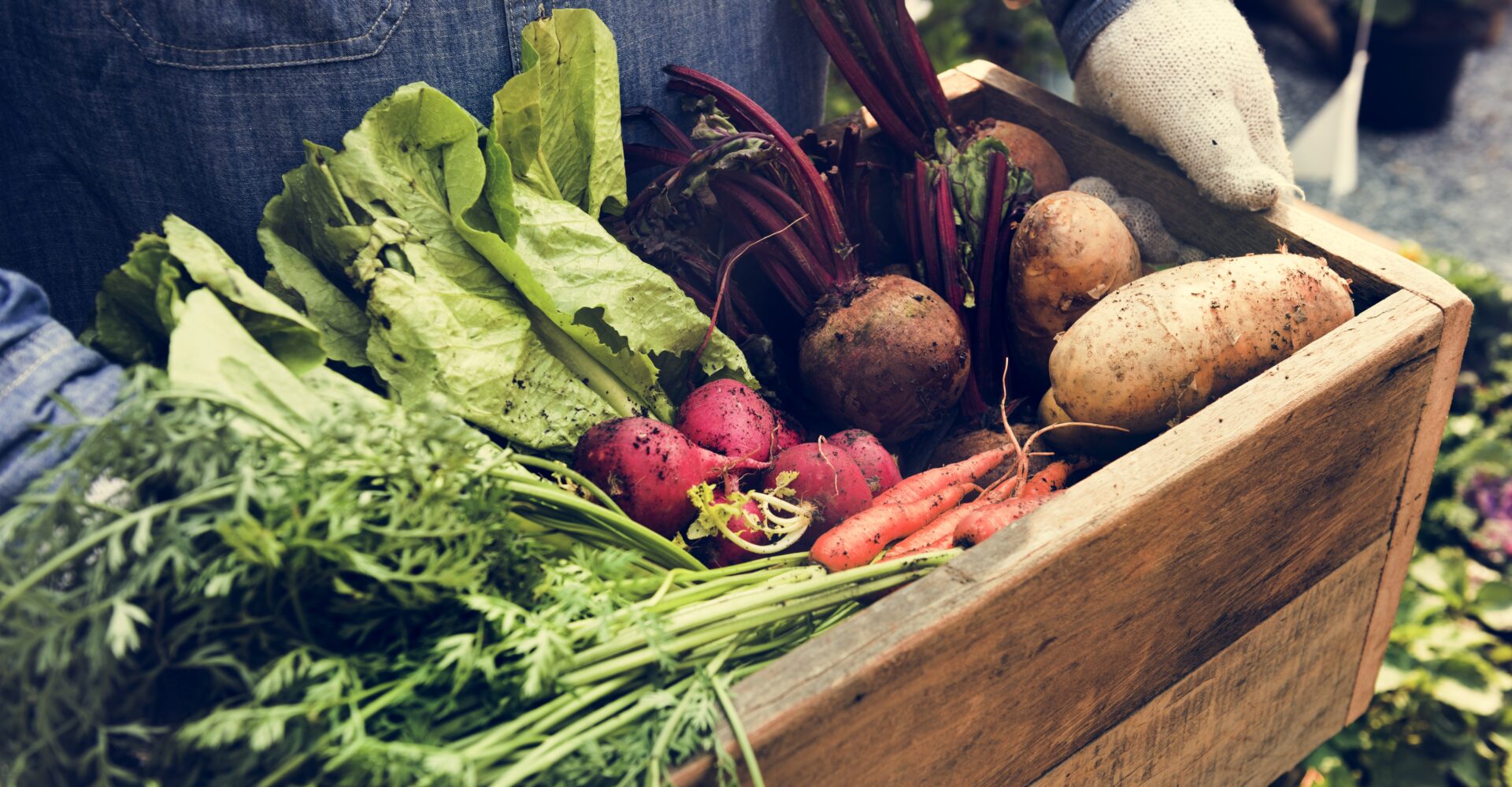Early spring found Beth Satterwhite and Erik Grimstad growing radishes and carrots in a caterpillar tunnel and other vegetable crops in high tunnels. The husband-and-wife team are in their seventh year of operating Even Pull Farm, which is located on two acres of rented ground in McMinnville, Ore. The couple grow cut flowers and many different varieties of vegetables.
Controlling Disease Under Cover
“We do get some disease pressure in the tunnels,” Satterwhite said. “We manage it with rotation.”
Jeff Timpone, garden manager of Wepler Farms in Brownsville, Ore., also uses rotation as a disease prevention strategy.
“We are pretty fortunate,” Timpone said. “We don’t have too many issues growing under cloth or plastic. Some downy mildew, but it usually isn’t too severe. But when we do have issues, we will burn the bed with a propane torch before we till it in. Constant crop rotation definitely helps, too. Most spots in our garden get turned over four to five times a year. It just depends on what was planted there. For some longer crops like tomatoes, it’s less, but those will be planted somewhere else the following year.”
Wepler Farms has been in operation since the 1980s. They grow baby vegetables and salad greens which they send weekly by airplane to high-end restaurants all over the country.

Insect Pests
Satterwhite and Grimstad had spider mite issues last year in their cucumbers and eggplants. They have recurring problems with other insects, too.
“Flea beetles and aphids are always around,” Satterwhite said.
Timpone also has problems with flea beetles. “We’re dealing with flea beetles now,” he said. “We seal the beds up under cloth to combat them. Then if we have a big hatch out, we will often burn the bed to get as many as we can.”
Aphids aren’t too much of an issue at Wepler Farms, Timpone said. “We are generally pretty lucky with aphids, which is fortunate because they are tricky.”
Most of Even Pull Farm cut flowers are field-grown outdoors. The more than 50 types of flowers, and over 150 cultivars, are grown on just under 0.25 acres.
As for vegetables, there are plenty of those, too.
“We grow all of the vegetables, from arugula to zucchini,” Beth said.
Some of the veggies are heirloom varieties. Some are just plain weird. Kosaitai is one of the oddballs.
“It’s a new-to-us sprouting green. I love these kinds of greens; full of flavor, fast cooking and beautiful,” Satterwhite said. “Non-standard veggies are really where it’s at. Radishes are cool, bell peppers are fine, red round tomatoes from a local farm do taste pretty amazing, spinach is good. But the weirdos, unique varieties, things you’ve never heard of and the ‘ugly’ veggies really have my heart.”
Satterwhite and Grimstad, along with a crew of four employees, grow crops 50 weeks out of the year. They love growing delicious, healthy things to eat, and although a labor of love, as all farmers know, it’s also labor-intensive work. The couple have plans to cut back their total weeks of vegetable production somewhat, “So we can get some rest,” Satterwhite said.

Evolving Business Model
Satterwhite and Grimstad’s business model has changed and evolved since they first began. For the first few years, they did Community Supported Agriculture (CSA) gardening.
“But we only had about 30 subscribers,” Satterwhite said. “It wasn’t sustainable.”
They also had constant interruptions from subscribers and others stopping by the farm to hang out, look around and chat. It’s not that Satterwhite and Grimstad minded the visitors, per se, but the constant need to stop and answer questions and give tours took up too many precious daylight hours. After some consideration, they took the farm address off their website.
Since abandoning the CSA business model, Satterwhite and Grimstad now grow for local restaurants, all within 25 miles of their farm. They make delivery runs three days a week to provide fresh ingredients for the Yamhill Valley chefs to use in their dishes.

Even Pull Farm also sells vegetables and cut flowers at the seasonal farmers market in downtown McMinnville. They host pop-up events for special holidays such as Thanksgiving – think squashes and other fall veggies – and Mother’s Day with offerings of spring flower bouquets. Satterwhite keeps an email list to notify customers of upcoming pop-up events. She also sells “market shares,” which is basically a prepaid credit card with a built-in discount. Customers can purchase the card before the farmers market starts each spring, thus giving some extra supply money to the farm during the slower winter months.
Even Pull Farm maintains their own cooler at Mac Market in downtown McMinnville. They are soon expanding to two coolers, which they will stock twice a week with whatever vegetables are in season. They also provide mixed bouquets of flowers at Mac Market. Located inside a renovated historical warehouse that was once a shoe-grease factory, Mac Market is a “collaborative and community-driven eating, drinking and gathering place.”

Online Presence
COVID-19 forced many farmers to pivot to remain relevant and in business. Satterwhite stayed active online to reach out to customers and those interested in how their food is grown. Even Pull Farm, with a double oxen yoke as a logo, has an informative, colorful website. Satterwhite also keeps up with active social media accounts, using her farm’s Instagram account almost like a blog.
Keeping It Upbeat Online
“We spent Earth Day planting and cultivating all of the things before the rain, among the birdsong and sunshine and strong, chilly spring winds. The best thing about farming is working outside. All year long, no matter the weather, we get to see and experience it all. We are grateful every day for this amazing planet, for the plants, the soil, the sunshine and rain. The generosity of it all is overwhelming and beautiful,” Satterwhite said on Instagram.
Remembering to Say ‘Thank You’
“You can also, as always, find our veggies on the menu at many fine eateries around our county,” Satterwhite said. “Thank you, chefs, we love you all. There’s a lot of good future in all of our futures! Thanks for your support, each and every one of you out there—you make it all possible!”
Keeping It Local
On April 18, Satterwhite wrote, “It is verrrrrry weird for it to be in the 80s when there are barely leaves on the trees. And the river already looks alarmingly low because of like three days of irrigation in the county… BUT, the summer babies in the prop house finally don’t look like death which means they will get to graduate to the tunnels this week! Yay!”
On April 29, Satterwhite wrote, “Got my second dose of vaccine this morning, planted summer crops all afternoon, and ended the day by making these pretties [with a photo of flower bouquets]. I really missed making bouquets in 2020. With everything falling apart in so many ways last season, I didn’t have the bandwidth to maintain the flower block or to do anything with the blooms we had beyond making bunches. We kept a few key crops going, but didn’t have the ingredients for making mixed bouquets, which meant that I didn’t have this creative outlet, which I didn’t fully know I needed until it was gone. Longest way ever to say that bouquets are BACK. And we’re happy about it.”
Satterwhite ends each online post with several hash tags. Here is a sampling of some she has used: #flowersforthepeople #grownwithlove #climatechangeisreal #trysomethingnew #somanytastythings #expandyourplate.







